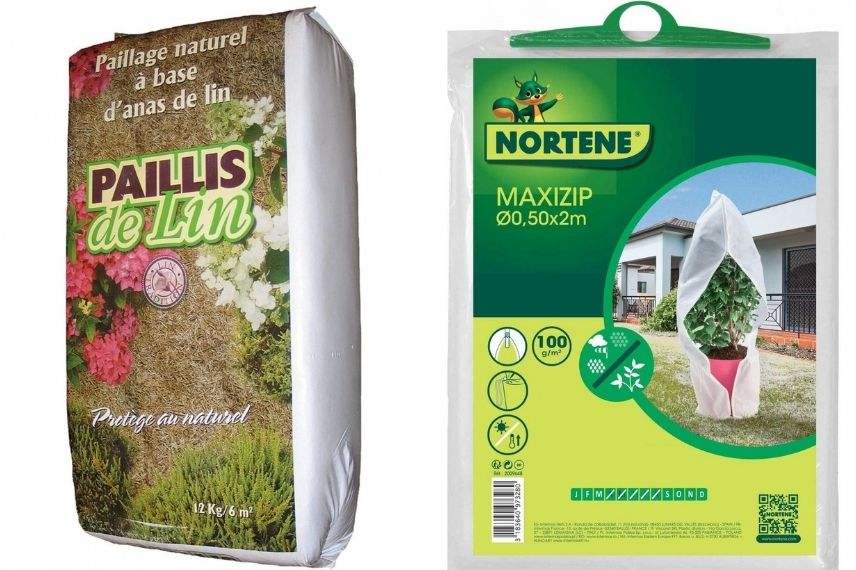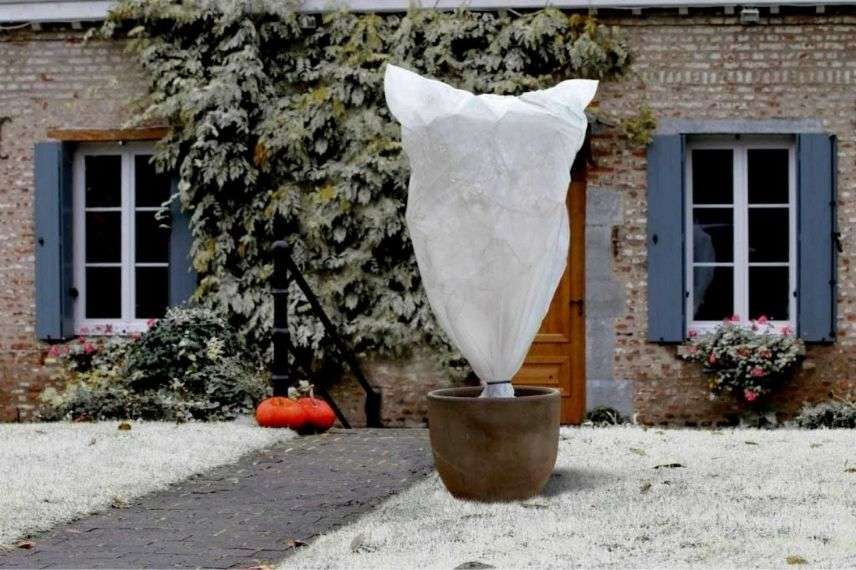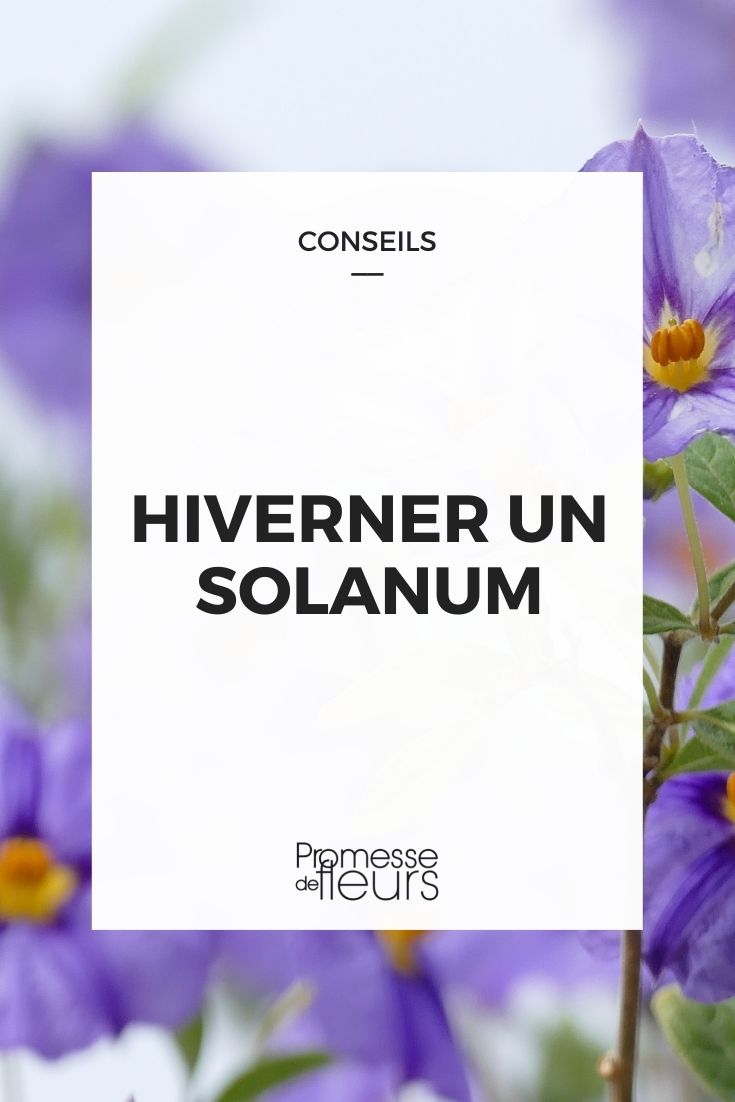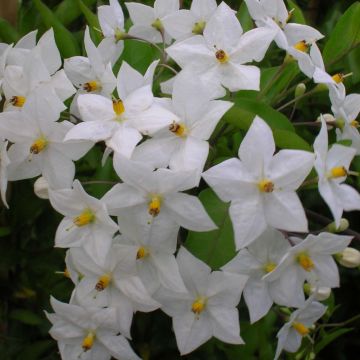
How to winter Solanum?
Our maintenance tips to overwinter solanum
Contents
Just like jasmine, Solanum is quite tender, rarely tolerating temperatures below -5 °C/-8 °C. It is easy to grow in the ground in regions with very mild winters. It is a classic in Mediterranean gardens but can also adapt to the Paris region in a very sheltered position. Elsewhere, in a cold climate, it should be reserved exclusively for pot cultivation and wintered away from frost, like a conservatory plant. At the beginning of winter, the solanum enters a period of dormancy. Care must be taken to ensure it does not freeze or decline during the winter.
Discover our tips for wintering your solanums in the best conditions and enjoy their graceful and generous flowering for a long time when the beautiful season returns.
 Solanums and their delicate flowering require high protection during winter</caption]
Solanums and their delicate flowering require high protection during winter</caption]
Protecting the soil of solanum in open ground from the cold
If you are in a region with a mild climate, meaning where it rarely freezes, your solanum can survive the winter outdoors provided you protect it. To do this, apply a generous layer of mulch and place a fleece if a cold snap is forecast.
Fleece is an effective cover to protect your crops and delicate plants during winter while allowing them to continue growing. It safeguards fragile but non-hardy plants by providing protection against freezing winds and can increase temperatures by 3 to 4 degrees. This winter protection is only effective if installed at the right time.
When to apply the protection?
Applying fleece is straightforward, but to do it at the right time, you need to be observant, know your plants well, and not remove it too early.
In the event of severe cold being forecast, protect the aerial parts of the plant with a fleece and mulch the stump from October with a winter mulch or fallen leaves. During winter, you should check that the fleece is properly installed and that all parts of the solanum are well protected. The fabric should not be pressed against your plants to avoid rot; plants tolerate dry frost better than wet frost. In case of prolonged rain, we recommend opening the cover to refresh the air as soon as temperatures allow. Also, be mindful of significant temperature fluctuations between day and night. Plants transpire and release moisture, so you should open your fleece as soon as daytime temperatures are mild. We advise checking regularly to ensure your winter covers are correctly positioned.
When to remove the protection?
As soon as temperatures warm up, you can remove your fleece during the day and replace it in the evening when nights are still cool during April. In May, you can take off your winter protection, ensuring that late frosts (the ice saints) have definitely passed.

On the left, flax mulch and on the right, winter cover
Read also
Mulching: Why? how?Protecting potted solanum from the cold
Potted or container plants are more exposed to the risks of frost. To best protect your potted solanum, it is advisable to place your plant out of the wind.
Using fleece
To avoid any failure in applying the fleece on your potted solanum, follow these five essential steps:
- Remove the saucer from the pot to prevent standing water;
- Elevate the pot to eliminate moisture around the plant;
- Remove any last flowers that could rot beneath the fabric. Also, perform some pruning to ensure your plant fits easily into the winter protection;
- Place your fleece at the base of the pot all around it and pull it up to wrap the entire plant as if you are dressing it. The fabric will protect your plant’s roots as well as your terracotta pots, which are at risk of breaking due to the cold;
- Secure your fleece with weather-resistant clips. These clips will allow you to continue watering and aerating your solanum easily.
In winter, you will need to water your solanum occasionally. Don’t hesitate to open the fleece on sunny days and close it again in the evening to prevent night frosts. You may opt for a winter cover that makes application and maintenance easier.
 Outside of Mediterranean regions, the solanum needs to be protected by fleece.</caption]
Outside of Mediterranean regions, the solanum needs to be protected by fleece.</caption]
Choosing a suitable wintering location
The solanum, native to warm and humid areas, cannot tolerate temperatures below -5°C. In regions where winters are harsh, bring the potted solanum indoors before the first frosts, keeping it safe from the cold in a frost-free, well-lit room such as an unheated conservatory or a garage with a window. Keep the compost barely moist in winter. You can take them back outside in spring when temperatures warm up and frosts are definitely over. When moving it outdoors, place it in partial shade for about fifteen days to gradually acclimatise it to the sun and prevent leaf burn.
Eric’s advice: to successfully winter your solanum and avoid thermal shock, do not bring it indoors abruptly as soon as it starts to get cold outside. Choose a time when the temperature difference between indoors and outdoors is not too significant.
Discover other Solanum
View all →Available in 0 sizes
Available in 1 sizes
Available in 1 sizes
Available in 1 sizes
Available in 1 sizes
Available in 1 sizes
For further reading
- Discover our superb varieties of solanum
- Get inspired to dress your terraces and pergolas with a climbing plant for pots.
- Our collection of Mediterranean climbers features the best species and varieties, discover them!
- Read our tips on pruning and training a solanum.
- Subscribe!
- Contents






































Comments